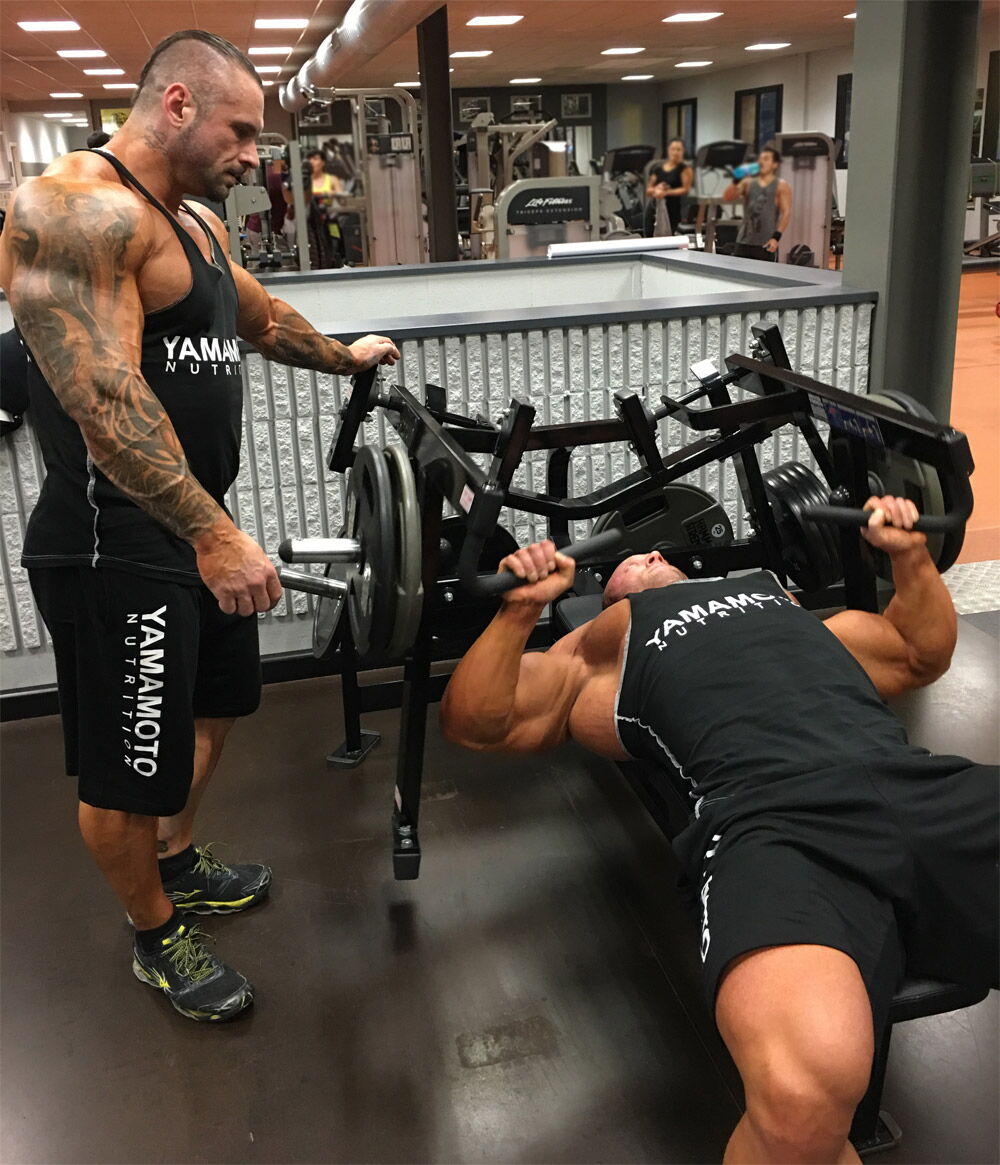Hypertrophy-Specific Training (HST) is a method which gained popularity following an article by Bryan Haycock published on ThinkMuscle in October 2000, in which he outlined the methods used by him and his clients. Haycock developed the training method based on "physiological principles" which lead to hypertrophy. These principles were originally discovered in a laboratory, and later applied to weight training. The main features of HST are:
- Mechanical load: to induce the maximum myofibrillar hypertrophy possible, involving MAPk/ERK, satellite cells, growth factors, calcium, and much more.
- Limiting the number of sets per exercise to just 1 or 2. This low volume is justified by the high number of workouts per week, with the aim of creating a constant anabolic stimulus (hence why we talk about multi-frequency training). Other aspects which justify this volume are the high TUT (time under tension), the focus on technique and control when executing the lift, and the use of heavy weights that prevent further sets. In order for the training to result in significant hypertrophic gains, the stimulus must be applied with sufficient frequency to create a new "environment" (unlike in single-frequency training). This is because many of the body's acute responses to this stimulus, such as increased protein synthesis, prostaglandins, IGF-1 and mRNA levels all return to normal in around 36 hours.
The strength increases resulting from resistance training can be attributed to neural adaptations such as rate coding, motor unit synchronisation, reflex strengthening, pairs of action potentials etc., therefore it is largely due to the activation of a greater number of motor units (which are also larger).
- The maximum load for a fixed set of repetitions is reached in the last training session of each two-week block.
- Strategic deconditioning - a period of time without training which is sufficient to allow for some aspects of the muscle tissue's adaptation to be reversed. According to the author, this should normally take 9-12 training-free days. This period is called "strategic" because you only need to insert these 9-12 days into the plan when you feel they are necessary (usually around every 6-8 weeks).
- The complete cycle involves 6-8 weeks of full-body training, with only one or two exercises per muscle group and 3 workouts per week.
- Repetitions should be reduced every two weeks in the following order:
- 15 reps for two weeks (can be skipped when you are about to restart after the first 8-week cycle)
- 10 reps for two weeks
- 5 reps for two weeks
- Continue with 5 reps for two weeks, or start two weeks of negative reps;
-
Increasing load (since we hope for an improvement rather than a decrease in repetitions).
-
Prevalence of compound exercises to maximise the effects caused by high loads (mechanical damage). Using multiple muscle groups stimulates more significant metabolic and endocrine responses.
-
Cardio workouts during rest days

Sample routine for a typical training day:
Thighs:
- Squats 1 x 10
- Stiff-legged deadlifts 2 x 10
Chest
- Incline bench 2 x 10
- Parallel dips 1 x 10
Back
- Pull-ups 2 x 10
- Rows 2 x 10
Traps
- Shrugs 1 x 10
Deltoids
- Shoulder press 1 x 10
- Lateral raises 1 x 10
- Deltoid machine 1 x 10
Biceps
- Dumb-bell curls 2 x 10
Triceps
- French press 2 x 10
Calves
- Standing calf raise 2 x 10
Abs
- Crunches 2 x 10
Personal views
When it comes to this method, I appreciate both the use of increasing loads and the variation in the range of repetitions in order to involve different types of muscle fibres depending on the phase. On the other hand, the strategic deconditioning phase does not seem appropriate, since it could very easily lead to a step backward in terms of weights. The fact that it is a full-body workout and that it takes advantage of multi-frequency training is a smart approach, considering the overall volume. However, with only 3 workouts a week, this remains significantly less than the classic split routine or any other kind of multi-frequency training.
My advice, therefore, should you decide to apply this method, is to increase the number of workouts to at least 4 a week and to insert (if needed) a recovery period in which you halve the number of sessions and reduce the intensity by 15% max.
